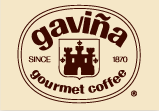Espresso Coffee
Espresso is well known for its rich flavor, thick texture, and the top layer of elegant golden foam or “crema.” Savor this sipping beverage slowly.
What Is Espresso?
Espresso is a term that can refer to a coffee blend, a method of brewing, or the beverage itself. This drink isn’t typically made with single origin beans (although it can be). Getting just the right taste and aroma usually entails using two or more coffee types that are deeply roasted to bring out the full-bodied, complex flavor and enticing aroma of a true espresso.
After the roasted beans are freshly ground to the desired size, the espresso drink is prepared by forcing very hot water under pressure through the tightly packed coffee grounds. Then, the drink is served in a preheated porcelain demitasse cup. It can be enjoyed “straight” or with milk. Espresso is often used as a base for hot and cold coffee drinks including lattes and cappuccinos. You can find instructions for the most popular espresso-based beverages in our Recipe Section.
Eight Essentials for Excellent Café Espresso
- Keep the espresso machine, group head and portafilter(s) clean and in good working order.
- Make sure the water is clean (free of odor, chlorine, and visible impurities).
- Apply the water to the ground coffee at the appropriate and consistent temperature and pressure.
- Select freshly roasted coffee beans that have full-body, intense flavor, and a lingering finish.
- Monitor the grind setting and adjust it as needed throughout the day.
- Grind and dose the correct amount of coffee beans to order for each beverage.
- Tamp the grounds firmly and evenly, and remove stray grounds from the rim of the portafilter.
- Serve the espresso within 10 seconds of brewing for maximum satisfaction.
Pulling an Espresso Shot
Brewing the perfect espresso is both an art and a science. We’ve provided basic instructions here, but each barista will make adjustments based on his or her espresso machine and other factors. It’s a good idea to make a test cup at the beginning of each shift.
- Pre-heat the cup by placing it on your machine’s cup warmer or rinsing it with hot water.
- Remove the portafilter from the group head, then flush the group head. Wipe basket clean and dry.
- Grind and dose the coffee to order into the filter basket immediately before making the beverage to ensure maximum freshness. Fill the portafilter basket with fresh ground coffee to overflow and level with your finger or straight edge. Basket should be filled to 14-18 grams for a double shot (we recommend always using a double shot).
- Tamp the grounds using 30–50 pounds of pressure. Wipe the top edge and sides of the portafilter to remove any stray grounds. The tamped grounds should have a smooth and level surface.
- Insert and lock the portafilter securely into the group head and immediately start the brew cycle.
- Quickly center the cup directly under the portafilter spout.
- Monitor the flow (extraction rate) of the liquid into the cup. It should be a steady stream with a deep brown color and the texture of warm honey. Watch carefully and stop the process at the correct extraction level. The resulting beverage should be 25-35 ml for a single shot or 50-70 ml for a double shot and have a thick, dark golden crema.
- Serve the hot beverage immediately (within approximately 10 seconds) so the customer will enjoy its full flavor, body and aroma.
- Remove the portafilter and firmly tap or “knock” out the used grounds into the knock box.
- Wipe the portafilter basket and rinse the group head to remove any used grounds or oils.
- Return the portafilter and lock it securely into the group head of the espresso machine. This will preheat it for the next beverage. (If the metal portafilter is cold, it will lower the brewing temperature and prevent proper extraction.)
- Make any coffee grinder adjustments if needed: coarser if the flow was too slow, finer is the flow was too fast.
Troubleshooting Your Espresso-Making Technique
The proper brewing or flow time for ideal extraction (counted from the first appearance of the liquid stream to the finish of the brew) is just 20-30 seconds. The stream has the appearance of thick, warm honey. The crema is dark golden and smooth. It is at least a quarter of an inch thick and heals quickly if broken. The espresso’s aroma is strong and the flavor is complex.
Signs of Under Extraction
- The coffee flows too quickly, with weak color and thin consistency
- The extraction rate is too short (less than 20 seconds)
- The crema is pale in color, watery
- The texture of the liquid is thin
- The flavor is weak and astringent
What Might Be Wrong?
- The grind is too coarse
- The coffee may be stale
- The dose of grounds is too small
- The tamp pressure is too light or uneven
- The water temperature is too low
Signs of Over Extraction
- The liquid flows more than 7 seconds after the start of brewing
- The coffee flows into the cup as a thick, syrupy liquid
- The extraction rate is 30+ seconds
- The crema looks too dark
- The flavor is too intense, very bitter
What Might Be Wrong?
- The grind is too fine
- The dose is too large
- The tamp pressure is too firm or uneven
- The water temperature is too hot
For a barista, preparing a magnificent espresso every time takes training and experience. We’re happy to show you exactly how it’s done. Visit our Training Page for more information about how we can help your staff learn the art of espresso brewing.




